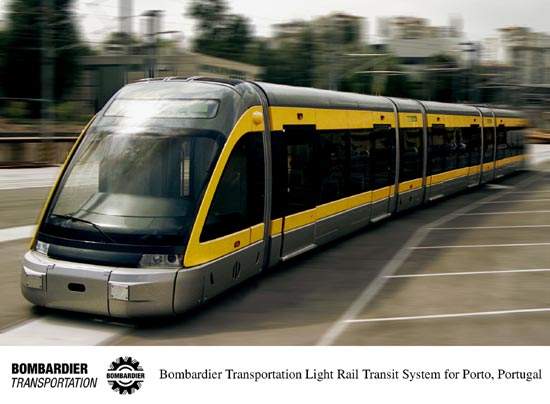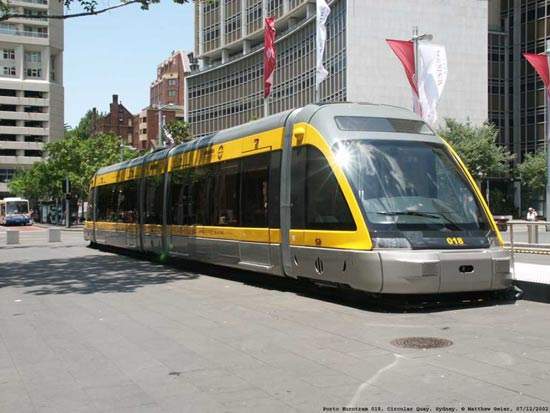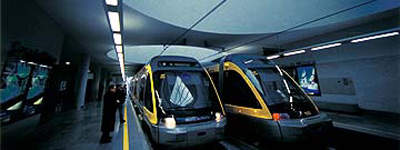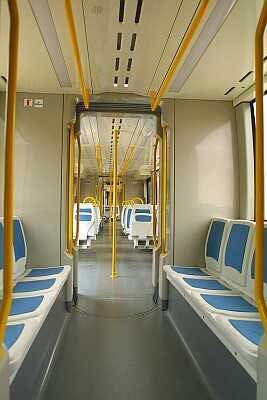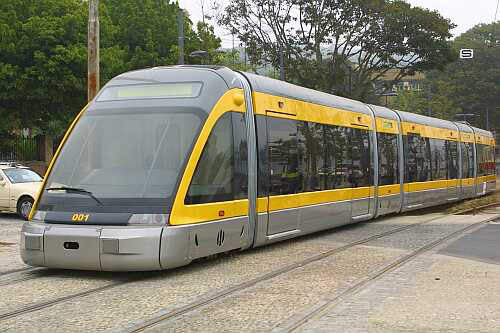Porto, Portugal’s second-largest city with a population of 1.2 million, has suffered for many years from an inadequate public transport system. As a major business and commercial centre it was suffering from the noise and oppression of traffic-choked streets and exhaust fumes.
The traditional tramway network, still operating with early 20th century vehicles, was all but worn out and closed. The city decided on the radical new approach of constructing a whole new light rail network, the largest complete transportation system currently under construction in Europe. It has cost €1.3 billion to install, and the first section opened four months ahead of schedule on 7 December 2002.
THE PROJECT
The first plans to modernise Porto’s transport infrastructure were formulated in the mid-1990s with the intention of reducing pressure on the city’s streets and providing fixed links to neighbouring towns and villages. The decision was finally taken to create a 70km (43.5-mile) light rail network to open in its entirety by the end of 2004.
As well as 20km (12.5 miles) of new tracks that reach into the city centre, the opportunity has been taken to incorporate 50km of down-at-heel suburban railway lines, which despite requiring heavy modification now provide a fully integrated public transport network.
In 1998 the Normetro consortium as awarded a five-year operations contract from the start of operations. It comprises Bombardier Transportation (electrical and mechanical systems, power supply, radio communication, new depot), Soares de Costa and Semaly (project co-ordination), ABB Sadelmi (fixed installations) and Transdev (operation and maintenance).
ROLLING STOCK
The first 24 trams entering service are part of a total contract for 72 to be completed by mid-2004.
The vehicles, previously marketed as the Eurotram but now part of the Flexity Outlook family, comprise seven modules weighing 40.5t. Assembly takes place at Bombardier’s plant at Amadora in Portugal, and the vehicles are virtually identical to fleets built in York and Derby, UK, for light rail networks in Strasbourg, France and Milan, Italy.
Capable of speeds up to 80km/h, they have 100% low-floor access and have handicapped-compatible interiors equipped with air conditioning and passenger information systems. Added safety is provided by the use of fire-resistant materials inside the trams and an extremely tough outer shell. About 75% of the vehicle’s visible surface is windowed and the front windows are laminated to resist the impact of a 1kg projectile at 80km/h.
INFRASTRUCTURE
Great care has been taken to keep disruption to an absolute minimum by placing 7km of new line through the city centre into tunnel, allowing the preservation of historic buildings and avoiding digging up narrow streets. The functionally designed stations, located some 750m apart to ensure that all passengers can access the system quickly, are equipped with information systems.
The first 12km of route, known as the Blue Line, links the centre with the Matosinhos further along the coast. The upgrading of two CP (State Railways) narrow-gauge diesel railways to light rail quality has seen the remodelling of 50km of route, including all stations, and regauging from 1,000mm to 1,435mm. From Fonto de Cuco the two lines will penetrate the inner city in an entirely new tunnel, first to reach Trindade, near São Bento railway station in central Porto. From Trindade the tunnel line runs further east to reach Campanhã.
SIGNALLING / COMMUNICATIONS
Bombardier in Portugal is supplying the electrical and mechanical subsystems including signalling, power supply, radio communication systems and depot equipment.
The system is signalled by conventional light rail methods, whereby the system is monitored from a controlled centre but drivers have the freedom to override controls when relevant. Up to 9,000 people an hour need to be accommodated in each direction at rush hours. During a free trial in summer 2003 to gauge customer reaction over 40,000 people were carried on one weekday.
THE FUTURE
There are outline plans to expand the system to around 100km (60 miles) within ten years. The proposed second phase includes a line to Gondomar (15km, 10 miles), departing from the current station at Casa da Musica to meet the first line in Gaia. Other options are lines to Maia, an extension from Matosinhos to Leca, and a connection to Sa Carneiro airport. Cost estimates were submitted to the Portuguese government during early 2003 and are in the region of €775 billion.

